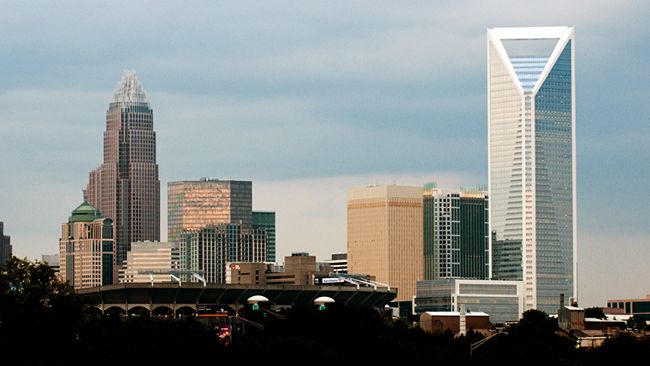Art meets technology in photos from The Nuclear Sublime

The Nuclear Sublime is a new large-format photobook that features fascinating and unusual photographs of the interiors of nuclear reactors and power plants across the United Kingdom.
The ANS Nuclear Cafe is a blog owned and edited by the American Nuclear Society. Information contained on the ANS Nuclear Cafe has been provided by numerous sources. Therefore, the American Nuclear Society assumes no responsibility or liability for the accuracy of information contained herein. DISCLAIMER: The views expressed in posted articles do not necessarily reflect the views of the American Nuclear Society. The views expressed here are those of the individual authors. ANS takes no ownership of their views. The American Nuclear Society assumes no responsibility or liability for any use or operation of any methods, products, instructions, or ideas contained on this site.


The Nuclear Sublime is a new large-format photobook that features fascinating and unusual photographs of the interiors of nuclear reactors and power plants across the United Kingdom.

The effort to build the Hinkley Point C nuclear power plant in Somerset, England, has been “prodigious, lengthy, and increasingly costly.” So says London-based energy, business, and environment writer Stanley Reed in his recent New York Times article, “Why Britain Is Struggling with Nuclear Power.”

Angwin
Chemist, author, nuclear energy advocate, and ANS member Meredith Angwin recently reached out to David Blackmon about Juice: Power, Politics and the Grid, a series of five short videos that she calls “a splendid resource for people who want to know about the electric grid.” Blackmon, a writer and 40-year veteran of the energy industry who is a fan of both Angwin and the video shorts, reposted her review on his Substack, “Energy Transition Absurdities.”
The videos, produced by Austin, Texas–based filmmakers Robert Bryce and Tyson Culver, feature interviews with Angwin and others as they “expose the perils facing our electric grid [and show] how we can improve the reliability of our most important energy network and address climate change by embracing nuclear energy.”

What will happen to the retired nuclear-powered merchant ship, the N.S. Savannah? The Maritime Administration (MARAD) of the Department of Transportation is investigating possibilities for the vessel’s future, whether it be in disposition, transportation, or preservation.

Donalds

Fleischmann
Two U.S. representatives—Chuck Fleischmann (R., Tenn.) and Byron Donalds (R., Fla.)—have published an op-ed in the Washington Examiner that calls for the United States to seize “the current nuclear economic opportunity worldwide” and “once again be the world leader in nuclear power.” The congressmen emphasize that “it is in the best interest of the United States and the rest of the world for our country, instead of China and Russia, to be the preferred partner for embarking nuclear nations.”
Atoms for Peace: Fleischmann and Donalds argue that President Dwight Eisenhower’s “Atoms for Peace” speech in 1953 established the foundational principles for the domestic and global success of the U.S. civil nuclear energy industry—and they urge the nation to reclaim those principles now. They point to the numerous benefits of nuclear energy, ranging from economic development to desalination to sustainable fuel creation, and note that the “global market is ripe for nuclear technology.”

On this holiday that celebrates all things love, here’s a look at the love affair that Kyle Hill has with nuclear energy—even its waste.

Love
The thriving gray wolf population in the Chernobyl exclusion zone (CEZ) has been the subject of recent media interest. While some sensationalist reports have referred to “mutant wolves” with “superpowers,” other news outlets have offered more sober discussions of the science behind the story.
Cara N. Love, a biologist and postdoctoral fellow in the Department of Ecology and Evolutionary Biology at Princeton University, has been following the wolf population. Her research in the Chernobyl exclusion zone (CEZ) in Ukraine and Polesie State Radioecological Reserve in Belarus is helping biologists understand how nature adapts to chronic radiation exposure.

Lusztig
The documentary film Richland, which won awards at the Tribeca Festival and Sheffield (U.K.) DocFest last year, continues to gain exposure. Directed by Irene Lusztig, a self-described “feminist filmmaker, archival researcher, educator, and seamstress,” the documentary explores the community and “nuclear origin story” of Richland, Washington, a town that was built by the U.S. government to house Hanford Site workers who made the weapons-grade plutonium for the atomic bombs of the Manhattan Project.
Washington State University offered a free screening of the documentary last week at its main Pullman campus, followed by a discussion with the director and Robert Franklin, an assistant professor in history at the university’s Tri-Cities campus and the assistant director and archivist for the Hanford History Project.
It’s not every day that local police departments find nuclear missiles in garages. But that’s what the bomb squad of the Bellevue, Washington, police department encountered on February 1 when they responded to a call. Fortunately, the missile turned out to be inert. It was a McDonnell Douglas AIR-2A Genie unguided air-to-air rocket (once known as an MB-1), which was designed to carry a 1.5 kiloton W25 nuclear warhead, but there was no warhead on the rusted rocket in the garage.

Danagoulian
Areg Danagoulian, associate professor of nuclear science and engineering at Massachusetts Institute of Technology, draws on his experiences growing up in Soviet-era Armenia to argue that nuclear energy is crucial to “help strengthen liberal democracies that are being unprecedently threatened” by what he calls authoritarian regimes, such as Russia and China.
Disasters both natural and man-made: In his essay “How Nuclear Power Saved Armenia,” published by the Bulletin of the Atomic Scientists, Danagoulian recalls the shutdown of Armenia’s Metsamor nuclear reactors in 1989 in the wake of fears generated by the 1986 Chernobyl accident, which “dramatically undermin[ed] public trust in nuclear power as a safe source of energy.” He asserted that “the public perception of danger from nuclear power was magnified by the outrageous lies that the Soviet leadership spread about the disaster, the obvious incompetence and irresponsibility of the Soviet nuclear designers who built and operated the Chernobyl reactor, and the poorly executed cleanup efforts, which were compounded by miscalculations and gross mistakes.”
 A new report, A New Nuclear Age: How 2023 Developments Will Impact the Industry in 2024, has been released by Morgan Lewis, a global corporation that provides litigation, corporate, labor and employment, and intellectual property services. Morgan Lewis’s energy specialist attorneys, who compiled the report, reviewed recent developments in rules and guidance from the Nuclear Regulatory Commission and Department of Energy that have impacted various aspects of the nuclear energy industry. Covered areas include cybersecurity, small modular reactors, advanced reactors, sustainability, export controls, plant decommissioning, microreactors, and fusion systems. Also considered in the report are potential future developments that may further affect the nuclear industry this year.
A new report, A New Nuclear Age: How 2023 Developments Will Impact the Industry in 2024, has been released by Morgan Lewis, a global corporation that provides litigation, corporate, labor and employment, and intellectual property services. Morgan Lewis’s energy specialist attorneys, who compiled the report, reviewed recent developments in rules and guidance from the Nuclear Regulatory Commission and Department of Energy that have impacted various aspects of the nuclear energy industry. Covered areas include cybersecurity, small modular reactors, advanced reactors, sustainability, export controls, plant decommissioning, microreactors, and fusion systems. Also considered in the report are potential future developments that may further affect the nuclear industry this year.

Duke Energy has confirmed “limited” layoffs across its territories as part of a company reorganization focused on clean energy.
In a statement, the company said, “Duke Energy is entering the next phase of its clean energy transition, which calls for a transformative expansion and modernization of our clean energy grid. . . . . We are reorganizing for greater efficiency and cost effectiveness.”

Wesoff
According to an admittedly informal and unscientific survey of people from online “nuclear affinity groups” conducted by Eric Wesoff, the editorial director for clean energy newsroom Canary Media, there is no consensus regarding when the next nuclear power plant will come on line in the United States. Wesoff recently reported that upon polling his nuclear-connected network on LinkedIn, X, and Reddit, he found that “the responses were all over the map.”
Nuclear renaissance? Wesoff was prompted to try his survey about the expected date for the next nuclear plant because “conditions are perfect for the American nuclear renaissance.” He cited strong support for the nuclear industry from the Department of Energy as well as from public opinion polls and online “influencers.” He thought therefore that he would find confident predictions for when the next new U.S. reactor would go on line. Instead, he found uncertainty and varied responses.

Crownhart
“I’ve got nuclear power on the brain this week.” So writes climate and energy reporter Casey Crownhart in a recent edition the Spark, the MIT Technology Review’s climate newsletter. In her article, Crownhart describes how, while she was conducting research on advanced nuclear energy for another article, she “went down some rabbit holes on . . . potential options for future nuclear plants” and has “reached new levels of obsession” about nuclear energy.
Nuclear primer: Crownhart’s article could serve as a primer for both basic nuclear and advanced nuclear technologies. She begins by discussing the “two absolutely essential pieces” of conventional nuclear power plants—namely, the enriched uranium fuel and the pressurized water cooling system—and explains that the cooling system “keeps the whole thing from getting too hot and causing problems.”
The Japan-U.S. Decommissioning Workshop Series continues on February 8–9 when its second forum meets to discuss the handling of low-level radioactive waste (LLW) generated during the decommissioning process and how improved LLW management can reduce risk.
Registration for the online event is required. The registration deadline is 2:00 a.m. (EST) on February 5.
The Nuclear Regulatory Commission and the Federal Energy Regulatory Commission will meet on January 25 to discuss grid reliability, operating reactors, advanced reactor activities, cybersecurity, and other topics.
A new material based on amidoxime chemical groups may allow electrochemical extraction technology to extract uranium ions from seawater more efficiently than previous methods, according to a recent study published by the American Chemical Society’s ACS Central Science. If put into practical use, the new method, which was developed by researchers in China, could offer an environmentally sustainable source of fuel for nuclear power plants.

Investors continue to be bullish on uranium, according to a number of recent news reports. Stockhead recently trumpeted, “Uranium has started 2024 the same way it ended 2023—like a bull in a china shop. Spot prices are now agonizingly close to US$100/lb for the first time since 2008, with term pricing not far behind.” Similarly, Mining.com noted, “The spot price of uranium continues to rise, boosted by pledges to triple nuclear power by mid-century, supply hiccups from producers such as Cameco . . . , and the looming threat of a ban on Russian exports to the West.”

A new type of cold spray coating, made from the metal tantalum and applied to the plasma-facing steel walls of fusion reactors, could lead to efficient, compact fusion reactors that are easy to repair and maintain, according to a study recently published in the journal Physica Scripta. The study was led by scientists and engineers at the University of Wisconsin–Madison and involved researchers from South Korea, France, and Germany.

Three people were arrested on January 3 when they paraglided onto the site of a canceled nuclear power plant in Hartsville, Tenn., according to Nashville news station WSMV.